Onel Luis Alcaraz López
Non-Orthogonal Multiple-Access Strategies for Direct-to-Satellite IoT Networks
Sep 04, 2024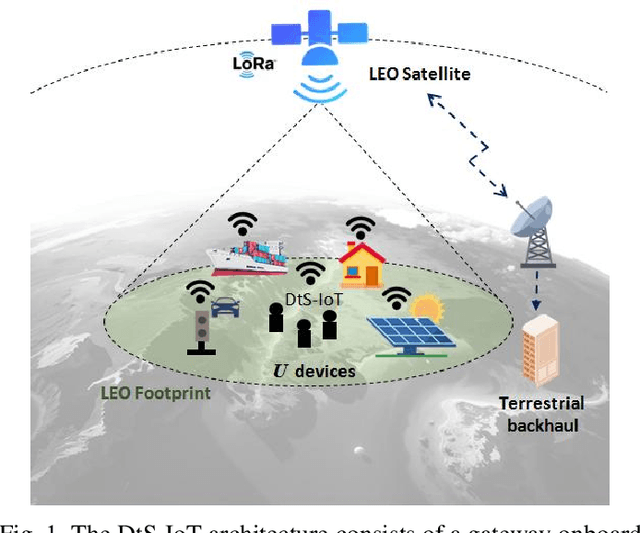
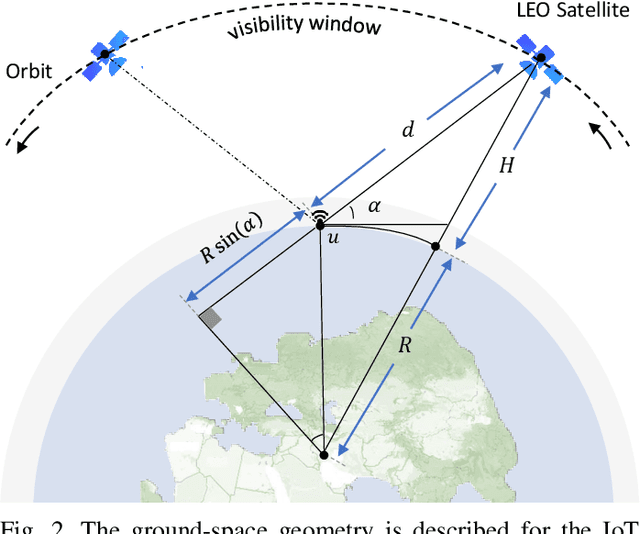
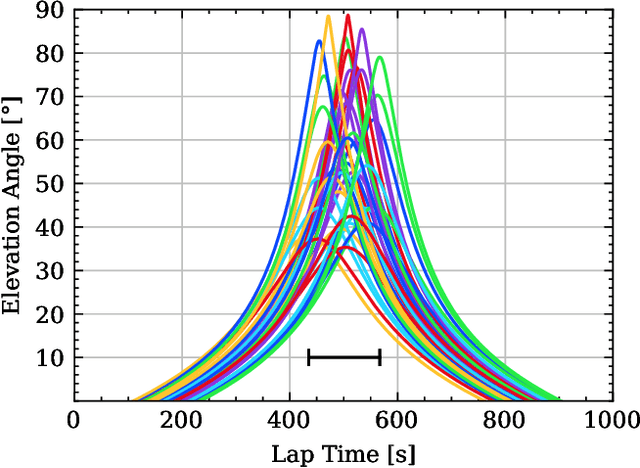
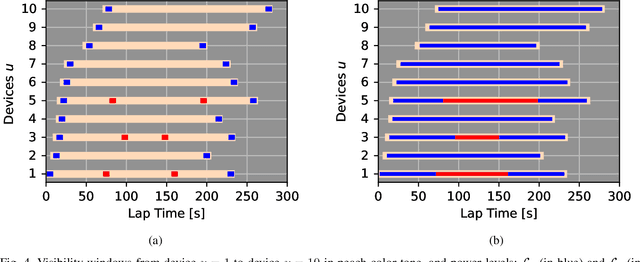
Abstract:Direct-to-Satellite IoT (DtS-IoT) has the potential to support multiple verticals, including agriculture, industry, smart cities, and environmental disaster prevention. This work introduces two novel DtS-IoT schemes using power domain NonOrthogonal Multiple Access (NOMA) in the uplink with either fixed (FTP) or controlled (CTP) transmit power. We consider that the IoT devices use LoRa technology to transmit data packets to the satellite in orbit, equipped with a Successive Interference Cancellation (SIC)-enabled gateway. We also assume the IoT devices are empowered with a predictor of the satellite orbit. Using real geographic location and trajectory data, we evaluate the performance of the average number of successfully decoded transmissions, goodput (bytes/lap), and energy consumption (bytes/Joule) as a function of the number of network devices. Numerical results show the trade-off between goodput and energy efficiency for both proposed schemes. Comparing FTP and CTP with regular ALOHA for 100 (600) devices, we find goodput improvements of 65% (29%) and 52% (101%), respectively. Notably, CTP effectively leverages transmission opportunities as the network size increases, outperforming the other strategies. Moreover, CTP shows the best performance in energy efficiency compared to FTP and ALOHA.
On the Spectral Efficiency of Movable and Rotary Access Points under Rician Fading
Aug 15, 2024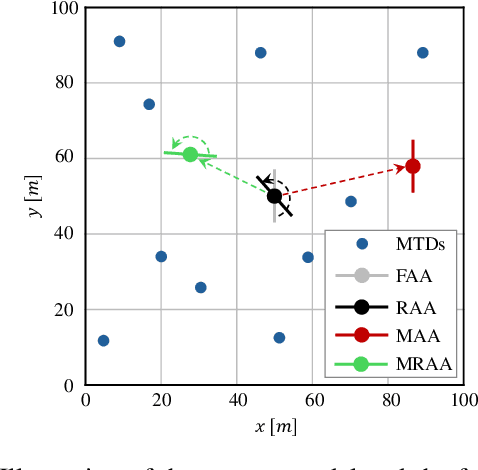
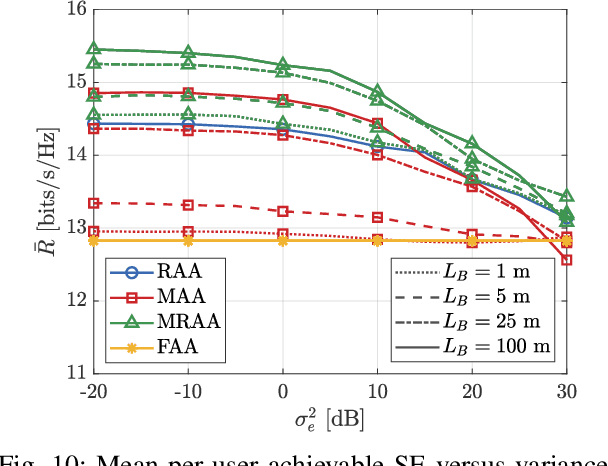
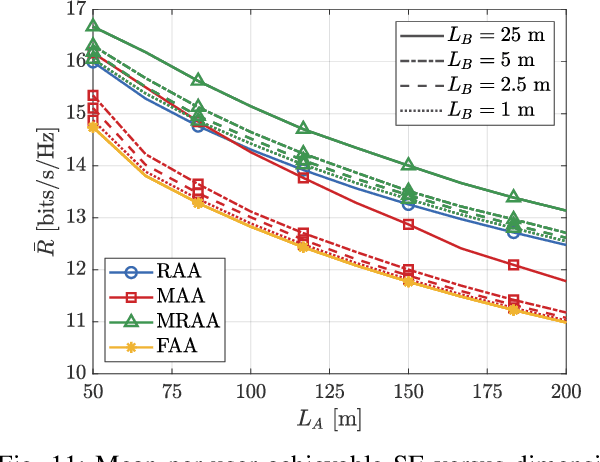
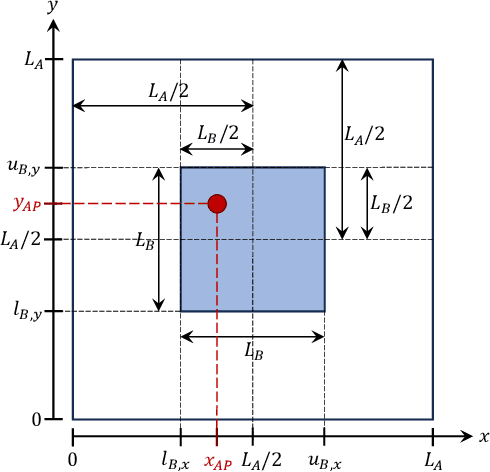
Abstract:Multi-User Multiple-Input Multiple-Output (MU-MIMO) is a pivotal technology in present-day wireless communication systems. In such systems, a base station or Access Point (AP) is equipped with multiple antenna elements and serves multiple active devices simultaneously. Nevertheless, most of the works evaluating the performance of MU-MIMO systems consider APs with static antenna arrays, that is, without any movement capability. Recently, the idea of APs and antenna arrays that are able to move have gained traction among the research community. Many works evaluate the communications performance of antenna systems able to move on the horizontal plane. However, such APs require a very bulky, complex and expensive movement system. In this work, we propose a simpler and cheaper alternative: the utilization of rotary APs, i.e. APs that can rotate. We also analyze the performance of a system in which the AP is able to both move and rotate. The movements and/or rotations of the APs are computed in order to maximize the mean per-user achievable spectral efficiency, based on estimates of the locations of the active devices and using particle swarm optimization. We adopt a spatially correlated Rician fading channel model, and evaluate the resulting optimized performance of the different setups in terms of mean per-user achievable spectral efficiencies. Our numerical results show that both the optimal rotations and movements of the APs can provide substantial performance gains when the line-of-sight components of the channel vectors are strong. Moreover, the simpler rotary APs can outperform the movable APs when their movement area is constrained.
Neural Network-Based Bandit: A Medium Access Control for the IIoT Alarm Scenario
Jul 23, 2024Abstract:Efficient Random Access (RA) is critical for enabling reliable communication in Industrial Internet of Things (IIoT) networks. Herein, we propose a deep reinforcement learning based distributed RA scheme, entitled Neural Network-Based Bandit (NNBB), for the IIoT alarm scenario. In such a scenario, the devices may detect a common critical event, and the goal is to ensure the alarm information is delivered successfully from at least one device. The proposed NNBB scheme is implemented at each device, where it trains itself online and establishes implicit inter-device coordination to achieve the common goal. Devices can transmit simultaneously on multiple orthogonal channels and each possible transmission pattern constitutes a possible action for the NNBB, which uses a deep neural network to determine the action. Our simulation results show that as the number of devices in the network increases, so does the performance gain of the NNBB compared to the Multi-Armed Bandit (MAB) RA benchmark. For instance, NNBB experiences a 7% success rate drop when there are four channels and the number of devices increases from 10 to 60, while MAB faces a 25% drop.
Distributed MIMO Networks with Rotary ULAs for Indoor Scenarios under Rician Fading
Jun 27, 2024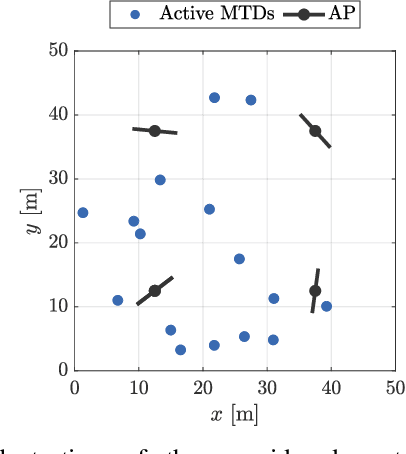
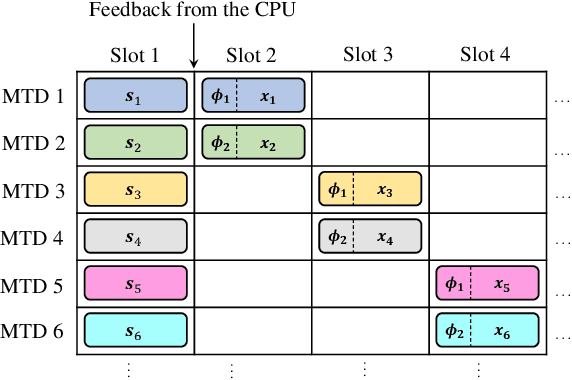
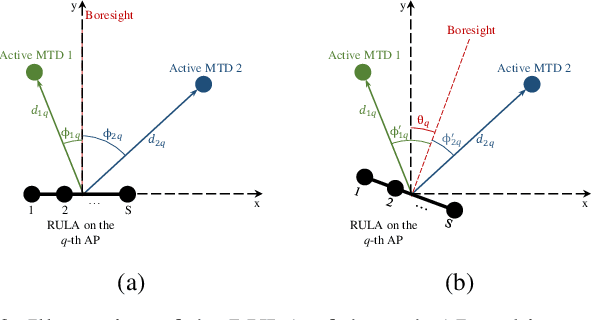

Abstract:The Fifth-Generation (5G) wireless communications networks introduced native support for Machine-Type Communications (MTC) use cases. Nevertheless, current 5G networks cannot fully meet the very stringent requirements regarding latency, reliability, and number of connected devices of most MTC use cases. Industry and academia have been working on the evolution from 5G to Sixth Generation (6G) networks. One of the main novelties is adopting Distributed Multiple-Input Multiple-Output (D-MIMO) networks. However, most works studying D-MIMO consider antenna arrays with no movement capabilities, even though some recent works have shown that this could bring substantial performance improvements. In this work, we propose the utilization of Access Points (APs) equipped with Rotary Uniform Linear Arrays (RULAs) for this purpose. Considering a spatially correlated Rician fading model, the optimal angular position of the RULAs is jointly computed by the central processing unit using particle swarm optimization as a function of the position of the active devices. Considering the impact of imperfect positioning estimates, our numerical results show that the RULAs's optimal rotation brings substantial performance gains in terms of mean per-user spectral efficiency. The improvement grows with the strength of the line-of-sight components of the channel vectors. Given the total number of antenna elements, we study the trade-off between the number of APs and the number of antenna elements per AP, revealing an optimal number of APs for the cases of APs equipped with static ULAs and RULAs.
On the Spectral Efficiency of Indoor Wireless Networks with a Rotary Uniform Linear Array
Feb 08, 2024Abstract:Contemporary wireless communication systems rely on Multi-User Multiple-Input Multiple-Output (MU-MIMO) techniques. In such systems, each Access Point (AP) is equipped with multiple antenna elements and serves multiple devices simultaneously. Notably, traditional systems utilize fixed antennas, i.e., antennas without any movement capabilities, while the idea of movable antennas has recently gained traction among the research community. By moving in a confined region, movable antennas are able to exploit the wireless channel variation in the continuous domain. This additional degree of freedom may enhance the quality of the wireless links, and consequently the communication performance. However, movable antennas for MU-MIMO proposed in the literature are complex, bulky, expensive and present a high power consumption. In this paper, we propose an alternative to such systems that has lower complexity and lower cost. More specifically, we propose the incorporation of rotation capabilities to APs equipped with Uniform Linear Arrays (ULAs) of antennas. We consider the uplink of an indoor scenario where the AP serves multiple devices simultaneously. The optimal rotation of the ULA is computed based on estimates of the positions of the active devices and aiming at maximizing the per-user mean achievable Spectral Efficiency (SE). Adopting a spatially correlated Rician channel model, our numerical results show that the rotation capabilities of the AP can bring substantial improvements in the SE in scenarios where the line-of-sight component of the channel vectors is strong. Moreover, our proposed system is robust against imperfect positioning estimates.
Channel Scheduling for IoT Access with Spatial Correlation
Nov 17, 2023



Abstract:Spatially correlated device activation is a typical feature of the Internet of Things (IoT). This motivates the development of channel scheduling (CS) methods that mitigate device collisions efficiently in such scenarios, which constitutes the scope of this work. Specifically, we present a quadratic program (QP) formulation for the CS problem considering the joint activation probabilities among devices. This formulation allows the devices to stochastically select the transmit channels, thus, leading to a soft-clustering approach. We prove that the optimal QP solution can only be attained when it is transformed into a hard-clustering problem, leading to a pure integer QP, which we transform into a pure integer linear program (PILP). We leverage the branch-and-cut (B&C) algorithm to solve PILP optimally. Due to the high computational cost of B&C, we resort to some sub-optimal clustering methods with low computational costs to tackle the clustering problem in CS. Our findings demonstrate that the CS strategy, sourced from B&C, significantly outperforms those derived from sub-optimal clustering methods, even amidst increased device correlation.
Joint Activity Detection and Channel Estimation for Clustered Massive Machine Type Communications
May 04, 2023Abstract:Compressed sensing multi-user detection (CS-MUD) algorithms play a key role in optimizing grant-free (GF) non-orthogonal multiple access (NOMA) for massive machine-type communications (mMTC). However, current CS-MUD algorithms cannot be efficiently parallelized, which results in computationally expensive implementations of joint activity detection and channel estimation (JADCE) as the number of deployed machine-type devices (MTDs) increases. To address this, the present work proposes novel JADCE algorithms that can be applied in parallel for different clusters of MTDs by exploiting the structure of the pilot sequences. These are the approximation error method (AEM)-alternating direction method of multipliers (ADMM) and AEM-sparse Bayesian learning (SBL). Results presented in terms of the normalized mean square error and the probability of miss detection evince comparable performance to the conventional algorithms. However, both AEM-ADMM and AEM-SBL algorithms have significantly reduced computational complexity and run-times, thus, increasing network scalability.
Age-of-Information Dependent Random Access in NOMA-Aided Multiple-Relay Slotted ALOHA
Apr 18, 2023Abstract:We propose and evaluate the performance of a Non-Orthogonal Multiple Access (NOMA) dual-hop multiple relay (MR) network from an information freshness perspective using the Age of Information (AoI) metric. More specifically, we consider an age dependent (AD) policy, named as AD-NOMA- MR, in which users only transmit, with a given probability, after they reach a certain age threshold. The packets sent by the users are potentially received by the relays, and then forwarded to a common sink in a NOMA fashion by randomly selecting one of the available power levels, and multiple packets are received if all selected levels are unique. We derive analytical expressions for the average AoI of AD-NOMA-MR. Through numerical and simulation results, we show that the proposed policy can improve the average AoI up to 76.6% when compared to a previously proposed AD Orthogonal Multiple Access MR policy.
Joint Coherent and Non-Coherent Detection and Decoding Techniques for Heterogeneous Networks
Sep 27, 2022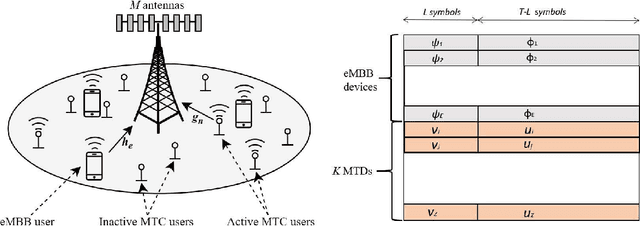
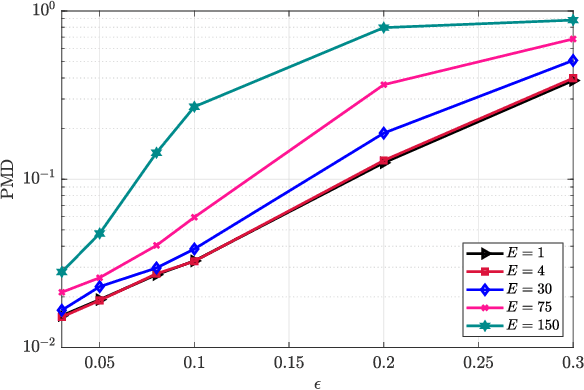
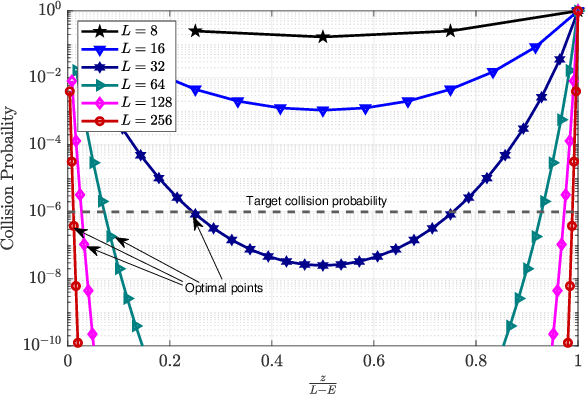
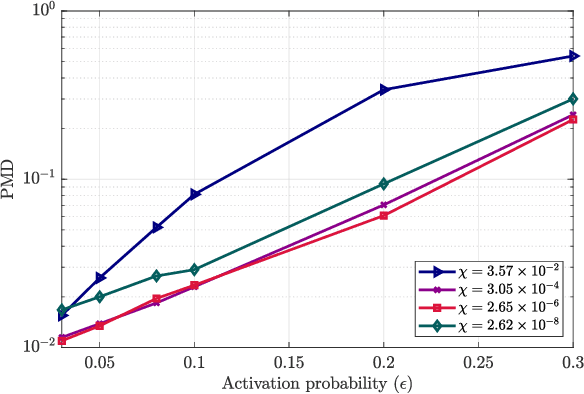
Abstract:Cellular networks that are traditionally designed for human-type communication (HTC) have the potential to provide cost effective connectivity to machine-type communication (MTC). However, MTC is characterized by unprecedented traffic in cellular networks, thus posing a challenge to its successful incorporation. In this work, we propose a unified framework for amicable coexistence of MTC and HTC. We consider a heterogeneous network where machine-type devices coexist with enhanced mobile broadband (eMBB) devices and propose transceiver techniques that promote efficient signal recovery from these devices. For this, we present an eMBB pilot and MTC data generation strategy that facilitates joint coherent decoding of eMBB data and non-coherent decoding of MTC data. Furthermore, we assess the feasibility of coexistence using receiver operating characteristics, outage probability, and normalized mean square error (NMSE). Our numerical results reveal that a harmonious coexistence of the heterogeneous services can be achieved with properly configured average signal-to-noise ratios and pilot length.
Joint Channel Estimation and Device Activity Detection in Heterogeneous Networks
May 27, 2021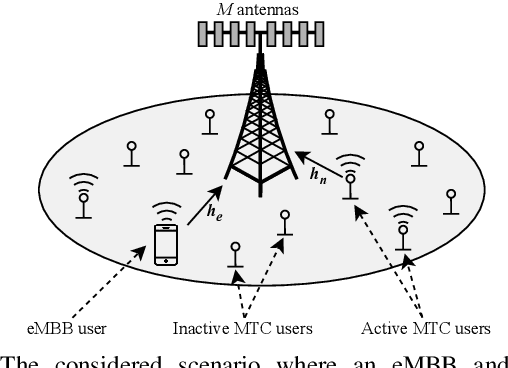
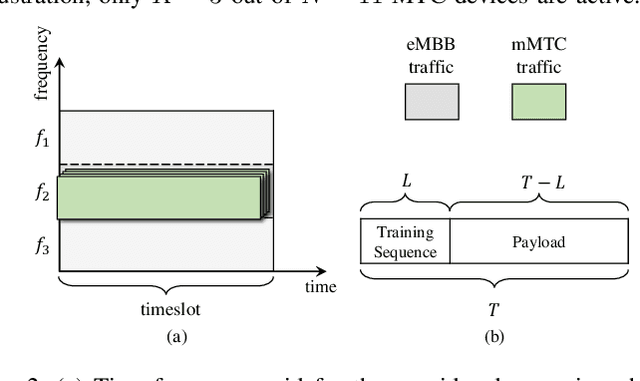
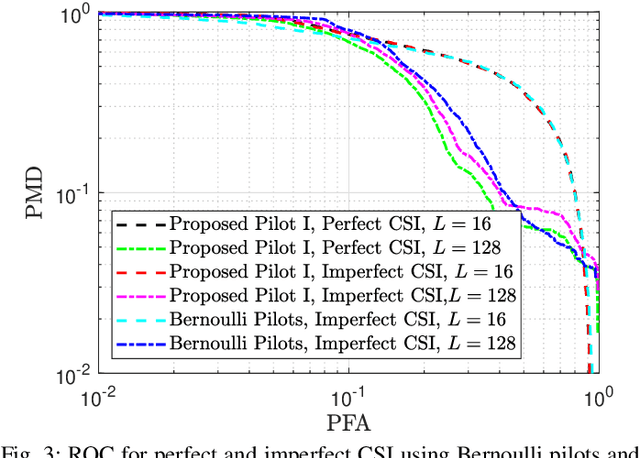
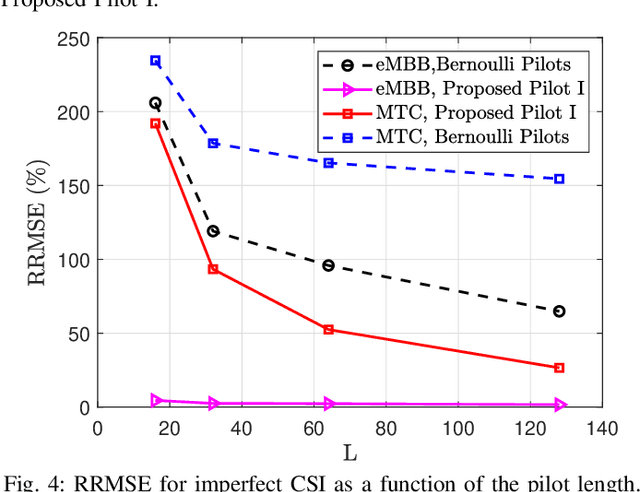
Abstract:Internet of Things (IoT) has triggered a rapid increase in the number of connected devices and new use cases of wireless communications. To meet the new demands, the fifth generation (5G) of wireless communication systems features native machine type communication (MTC) services in addition to traditional human type communication (HTC) services. Some of the main challenges are the heterogeneous requirements and the sporadic traffic of massive MTC (mMTC), which makes the orthogonal allocation of resources infeasible. To overcome this problem, grant free non-orthogonal multiple access schemes have been proposed alongside with sparse signal recovery algorithms. While most of the related works have considered only homogeneous networks, we focus on a scenario where an enhanced mobile broadband (eMBB) device and multiple MTC devices share the same radio resources. We exploit the approximate message passing (AMP) algorithm for joint device activity detection and channel estimation of MTC devices in the presence of interference from eMBB, and evaluate the system performance in terms of receiver operating characteristics (ROC) and channel estimation errors. Moreover, we also propose two new pilot sequence generation strategies which improve the detection capabilities of the MTC receiver without affecting the eMBB service.
 Add to Chrome
Add to Chrome Add to Firefox
Add to Firefox Add to Edge
Add to Edge